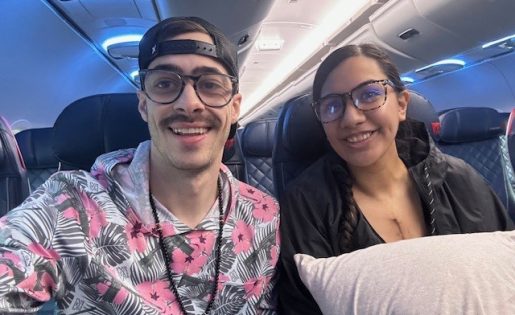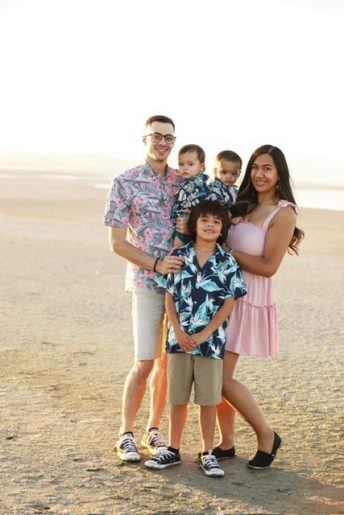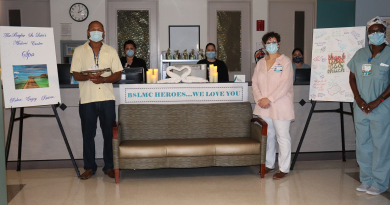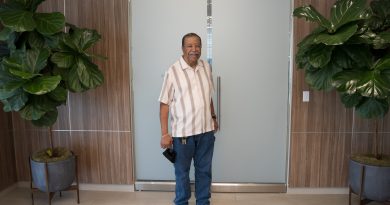Patient travels from Utah for open heart surgery

In October 2023, Jasmariah Swenson went to a hospital in Utah with chest pain. At first glance, this beautiful 29-year-old mother of three appeared completely healthy and without an obvious cause for the new onset of chest pain. However, during her cardiac evaluation, the echocardiogram revealed an aortic root aneurysm. This is an enlarged section of the aorta that is at risk of tearing or bursting, which is life-threatening. Because of this unexpected finding, Swenson was promptly referred to Dr. David Affleck, a cardiac surgeon in Salt Lake City.
Affleck consulted with Swenson, and due to an inability to obtain a complete family medical history, she was sent for genetic testing. Her genetic test revealed a connective tissue disorder caused by an ACTA2 genetic variation that changes the structure of arteries and is associated with developing life-threatening acute aortic dissection.
Swenson initially thought she would have several months to prepare for open heart surgery, but due to her genetic disorder, a prompt repair of her aorta was critical. Because of Swenson’s age and good overall health, Affleck recognized that to provide her the best quality of life, she would need a specialized surgery that would replace her enlarged aortic root but save her own aortic valve (commonly known as a David procedure).
“After explaining what type of specialized cardiac surgery I would need, Dr. Affleck told me that if it were his daughter, he would send me straight to Dr. Marc Moon in Houston,” she said.
Within a month of receiving this news, Swenson and her husband, Beau, were on a plane headed to Houston, where she would undergo open heart surgery and have the David procedure just before her 30th birthday.
“The David procedure is an intricate surgery that allows the patient to keep their own native aortic valve instead of requiring a replacement with a cow’s valve, which only lasts 10 to 15 years, or a mechanical valve, which requires life-long blood thinners to prevent clots,” said Moon, Baylor Medicine cardiothoracic surgeon. “It was a great advance in heart surgery, especially for young patients like Swenson.”
Swenson had a successful aortic valve-sparing aortic root replacement performed by Moon and also received specialized cardiac care from Dr. Jose Diez, Baylor Medicine cardiologist, who provided expert care before and after her surgery.
 Swenson recovered from open-heart surgery without complications, and after 11 days, she and her husband returned to Utah, where they were reunited with their family and three children. She recalled the amazing level of support that she experienced from her family and friends. “All of my family were wearing red during my surgery and time recovering in the hospital. I kept receiving photos and messages like, ’Go red for Jazzy.’ It was so encouraging,” she said.
Swenson recovered from open-heart surgery without complications, and after 11 days, she and her husband returned to Utah, where they were reunited with their family and three children. She recalled the amazing level of support that she experienced from her family and friends. “All of my family were wearing red during my surgery and time recovering in the hospital. I kept receiving photos and messages like, ’Go red for Jazzy.’ It was so encouraging,” she said.
Reflecting on her surgery, Swenson expressed overwhelming gratitude for a second chance at life and the opportunity to slow down and appreciate the little things. After returning home, she learned through genetic testing that her three children also have the genetic thoracic aortic disease.
She has taken the opportunity to share her story of open-heart surgery and living with a connective tissue disorder through a blog, podcast and authoring a book. She says that sharing her story has allowed her the opportunity to connect with other families with connective tissue disorders. “It feels great to connect and know that you’re not alone.” Swenson believes connecting with others brings power through increased awareness and knowledge.
To learn more about Swenson’s story on recovery from open heart surgery or living with a connective tissue disorder, you can follow her blog or follow her on Instagram @vulnerablewithme or @SweetJasmariah.
For more information on connective tissue disorders or provider resources, visit the Marfan Foundation.
By Brittany Rhoades, instructor and clinical nurse specialist in the Department of Surgery – Division of Cardiothoracic Surgery



